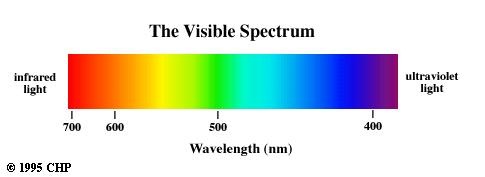To continue with the science journals, I would like to talk a little about another tool the DOM team uses to study, on a molecular level, the dissolved organic matter we collect in the water samples from the streams at the Cotton and Canada Glaciers. Already, I have shared information on a few biological tests we run on the water samples- Chlorophyll-a extraction and fluorescence (Dec. 11) and Bacterial Production (BP) by 3H (Tritiated) Thymidine Incorporation (Dec. 19), and one on a way in which we concentrate the water and DOM using Reverse Osmosis (Dec. 23). Today is all about "seeing" the DOM using UV-Vis Spectrophotometry.
UV-Vis Spectrophotometry:
The DOM team uses a dual-beam UV-Vis spectrophotometer to measure the light absorbed by molecules suspended in our water samples. Well, actually, the spectrophotometer measures the light that is not absorbed by the molecules and the instrument has to do a little mathematical work to figure out what wavelengths of light the molecules do absorb.
Huh? What? Wait, what is UV-Vis? What is spectrophotometry? Now that your head is perhaps a little confused, let me break down the title of this test. UV, or ultraviolet, is light that is just beyond the violet end of the visible light spectrum. The Vis, or visible, is the light that humans see as colors. My grandfather taught me a great way to remember the names of the visible light spectrum, ROY G. BIV, where R is red, O is orange, Y is yellow, G is green, B is blue, I is indigo, and V is violet. The visible spectrum of light is the colors of the rainbow in all their subtleties and nuances, where each "color" represents a specific wavelength of light. Okay, so, "UV" is the light that we humans cannot see as it falls after the V of ROY G. BIV, and "Vis" is the beautiful light we see in our very colorful world. The last word in the title of the test we use to see what light the DOM in the water does not absorb is "spectrophotometry." Break down the word "spectrophotometry" to it's root words and it is a great definition of it's purpose- "spectro-" means "to observe," "photo" means "light," and "-metry" means "measuring device." Spectrophotometry measures the amount of light that passes through the molecules in a sample, in our case water from the Cotton and Canada Glaciers.

Remember, light is merely waves of electromagnetic radiation that are absorbed, reflected, or refracted by matter. What we perceive as colors in any object or organism is actually the light that is not absorbed. For example, the petals of a red rose are red in color, because the petals absorb all visible light wavelengths, except red. It took the work of many great scientists and a great many years, to ascertain the light wavelengths at which many known molecules absorb light using UV-Vis spectrophotometry. Once a specific wavelength range on the light spectra is understood for a molecule, scientists may set-up the parameters on the UV-Vis Spectrophotometer to test samples for molecules of that particular absorbance. The DOM molecules we are studying are pretty complex and have no unique wavelengths. Rather, the amount of light absorbed by the molecules generally increases with decreasing wavelength i.e., as you move from the visible to the UV. Simpler molecules typically have peaks and shoulders that "fingerprint" its identity. We run tests on our collected at a number of different stages- within hours of the water coming to the lab from the field site, after the water rests for a day, immediately after a water sample is concentrated through the RO system, and after it rests for some time after concentration by RO. If water from the Cotton GlacierA mass of ice that persists for many years and notably deforms and flows under the influence of gravity. behaved like regular DOM then we would see a spectrum similar to what was described above with peaks and shoulders giving identity to the molecule. Instead the DOM team sees absorbance in Cotton GlacierA mass of ice that persists for many years and notably deforms and flows under the influence of gravity. samples that show distinct peaks at certain wavelengths prior to treating the water or letting it sit for a while, but once the water samples are treated or after a period of time, the peaks or the curve of the light absorption changes dramatically. At this point the DOM team has not analyzed the data to make a definitive conclusion on the nature of the Cotton GlacierA mass of ice that persists for many years and notably deforms and flows under the influence of gravity. DOM. We need more conclusive data using other powerful instruments back in the States to understand how these changes in DOM molecules occur, if they even do.


Comments